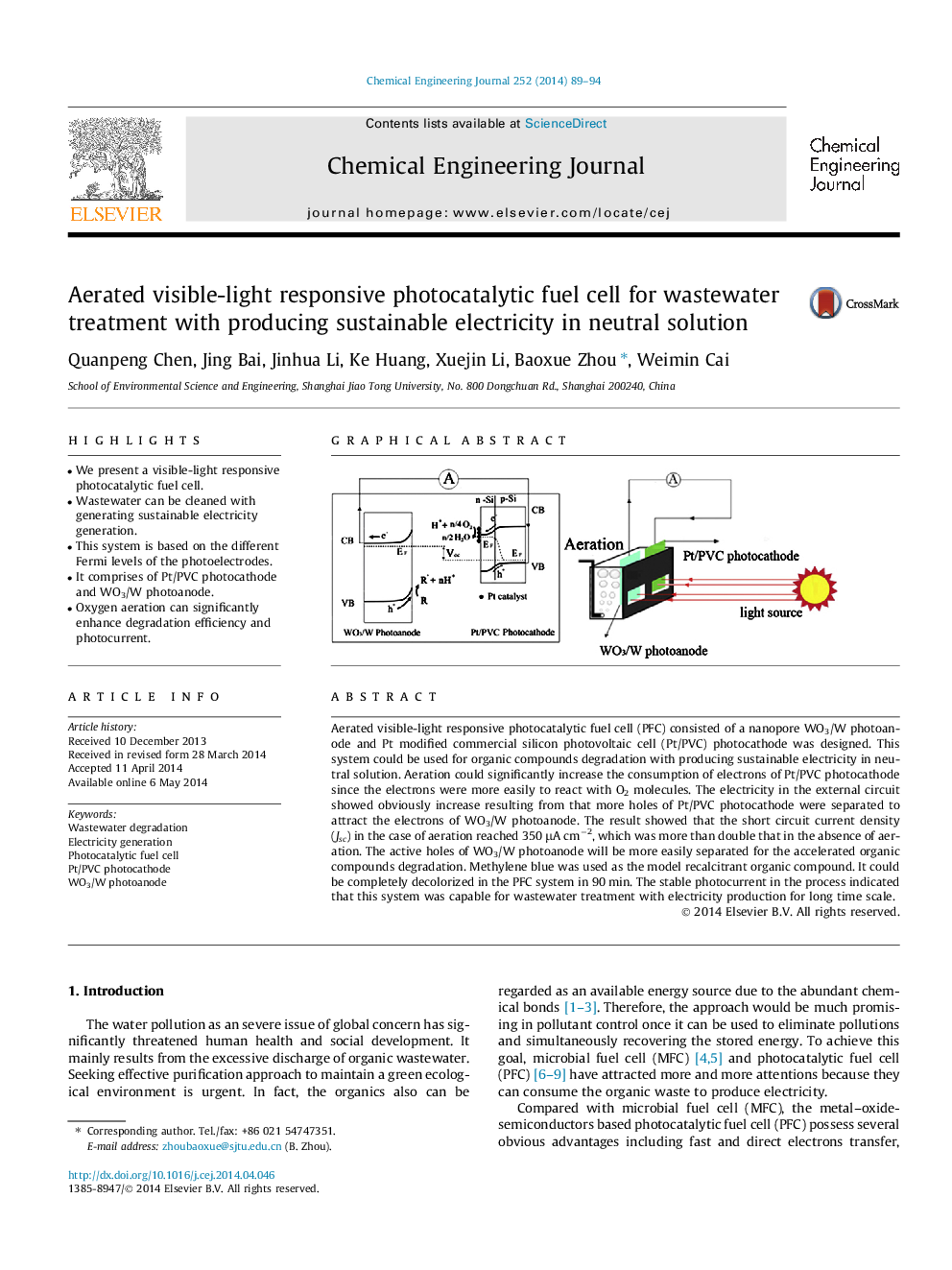| Article ID | Journal | Published Year | Pages | File Type |
|---|---|---|---|---|
| 147126 | Chemical Engineering Journal | 2014 | 6 Pages |
•We present a visible-light responsive photocatalytic fuel cell.•Wastewater can be cleaned with generating sustainable electricity generation.•This system is based on the different Fermi levels of the photoelectrodes.•It comprises of Pt/PVC photocathode and WO3/W photoanode.•Oxygen aeration can significantly enhance degradation efficiency and photocurrent.
Aerated visible-light responsive photocatalytic fuel cell (PFC) consisted of a nanopore WO3/W photoanode and Pt modified commercial silicon photovoltaic cell (Pt/PVC) photocathode was designed. This system could be used for organic compounds degradation with producing sustainable electricity in neutral solution. Aeration could significantly increase the consumption of electrons of Pt/PVC photocathode since the electrons were more easily to react with O2 molecules. The electricity in the external circuit showed obviously increase resulting from that more holes of Pt/PVC photocathode were separated to attract the electrons of WO3/W photoanode. The result showed that the short circuit current density (Jsc) in the case of aeration reached 350 μA cm−2, which was more than double that in the absence of aeration. The active holes of WO3/W photoanode will be more easily separated for the accelerated organic compounds degradation. Methylene blue was used as the model recalcitrant organic compound. It could be completely decolorized in the PFC system in 90 min. The stable photocurrent in the process indicated that this system was capable for wastewater treatment with electricity production for long time scale.
Graphical abstractFigure optionsDownload full-size imageDownload as PowerPoint slide
